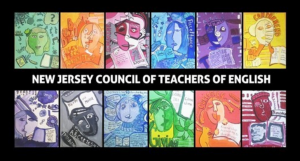by Michelle Wittle
I see them now, even though it was about nineteen years ago. Their teacher retired mid-year and there was a sub in the room. The students were all engaged in different activities such as combing each other’s hair, sleeping, making snowballs out of the worksheet, and talking to one another. The sub sat in the middle of the room and had two students near him. He was instructing them on how to fill out a simple prefix and suffix worksheet. They weren’t listening; they wanted him to give them the answers.
I was lucky in one sense because I got to see my students for the first time without teaching them. But in a larger sense, my face cannot tell a lie. I was so mad at the sub for allowing the students to carry on this way. Time will teach me how difficult being a substitute teacher is and how little training and how little money they get for this position. I didn’t understand the sub was probably left with no guidance, no plans, and was probably thrown into the room with the expectation to make it work. But, being so new to teaching, I had no idea how being a sub worked. I saw that moment in time and swore when I took over, things would be different.
And they were different.
The first book I taught them was Sounder. I taught it to my 7th graders while I was student teaching and there were enough books for a class set, so I thought it was a win/win.
It wasn’t. They were 9th graders who did not want to read about some guy going to prison for stealing a ham.
Next, I taught Midsummer’s Night Dream by Shakespeare. Not the No Fear Shakespeare version, but the real, Elizabethan text.
That went better than Sounder because the students read Romeo and Juliet last semester, but it still wasn’t great. I had students in 9th grade reading on a 3rd grade reading level. I didn’t understand I needed to put in extra supports for the students. They didn’t cover that kind of thing in my Shakespeare class in college.
It wasn’t just the materials I was picking, it was the lack of classroom management. I couldn’t understand why my students didn’t love picking apart language and discussing symbolism. I was banging my head against the Merriam-Webster’s dictionary trying to figure out why the students would not sit down, do the work, and listen.
It took Switch Day for my students and me to really begin to understand each other.
I had three students (it was the traditional block scheduling) willing to be me and I got to be a student. Two of the three students cried. One sat at the back at my desk, shaking his head. The other asked me how did I do this every day. I smiled, and then turned to my “friend” and starting talking right in the middle of the class.
What I learned from that experience was I had to really know the students I was teaching and they really needed to know the teacher who was in front of them every day, handing out journal topics and Shakespeare books.
Once the students got to talk with me, they started to see me as a human. I was no longer a robot barking orders and telling the students to read this and sit down. I had a life outside of school; I had interests and hobbies outside of teaching. And they wanted to ask me questions about my life, and I wanted to answer them and learn more about them. One student even told me how when she first met me, she thought I hated her. She looked at my face and saw how my lips were pulled straight and my arms were crossed over my chest and assumed I was looking like that because of her. My stomach dropped because I realized how my body language was misinterpreted by my student and I was horrified I sent that message. I told her I hated that some people did not know how to value her education and that I was so sorry she thought I hated her.
At the end of the year, my students asked me if I was going to stay on for the next year. One student who failed my class asked me if I would make sure he was in my class again.
Because I came in late in the year, I was bumped out of the position and had to pick another school in the district for the next school year. But, all these years later, I still can see my students sitting (and not sitting) in their seats. I can still hear them complain. I still hear them struggling with reading the part of Puck.
They changed who I became as a teacher and I will always be grateful for them.
MM Wittle is a Senior Lead Educator by day, an adjunct professor at night, and a writer on alternating Wednesdays. Wittle holds a BA in Secondary Education/English from La Salle University, an MFA in Creative Writing from Rosemont College, and a Supervisor Certification from Rowan University.
Attention NJ ELA teachers: Would you like to write for the NJCTE blog? We would be happy to publish your ideas and insights about your practice or resources you’ve had success with, etc. We welcome original pieces or those that have been posted elsewhere. Please send queries and contributions to njcteblog@gmail.com.

 Connected Reading
Connected Reading by Audrey Fisch
by Audrey Fisch